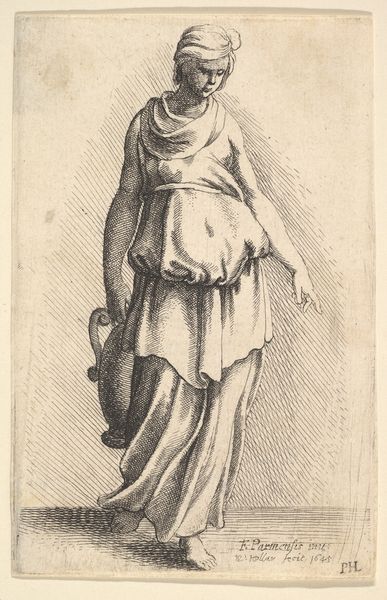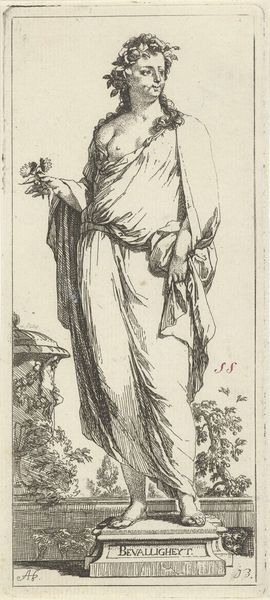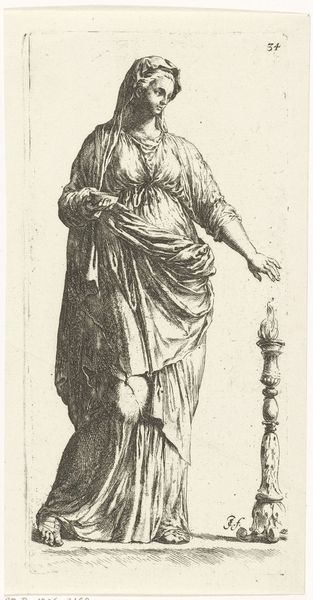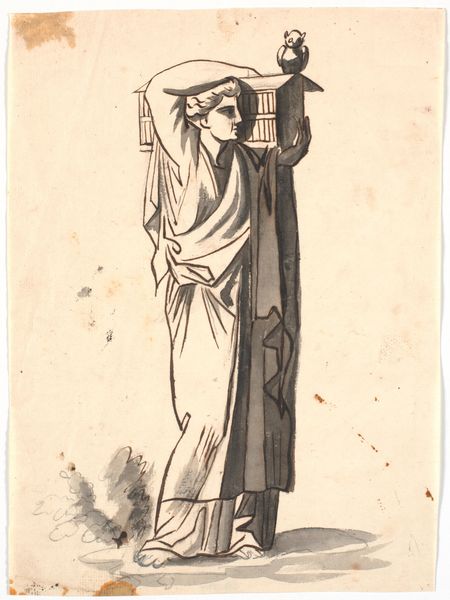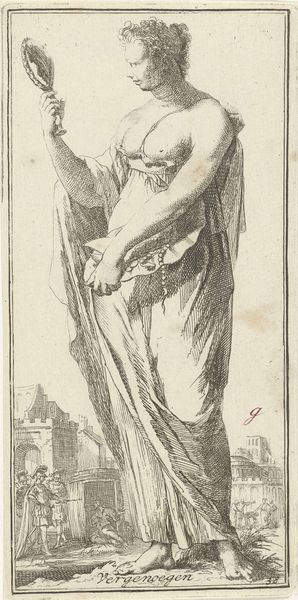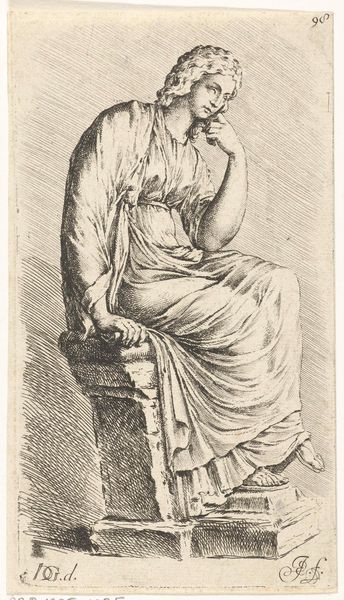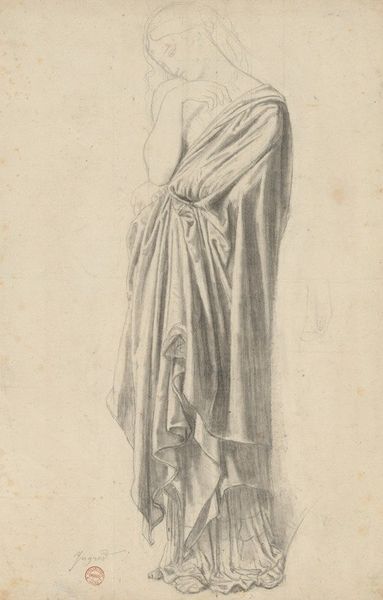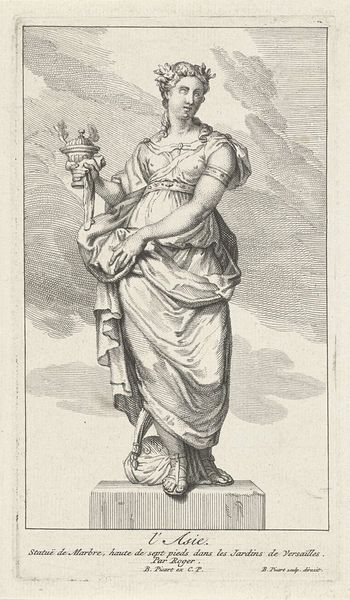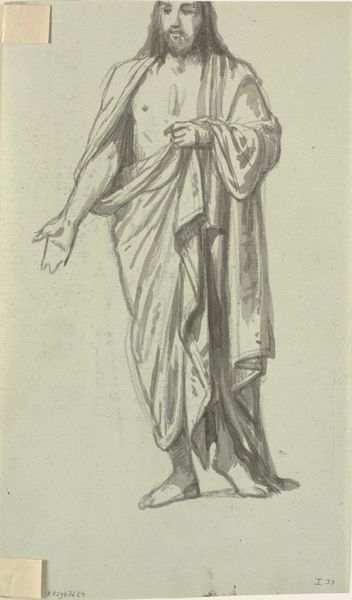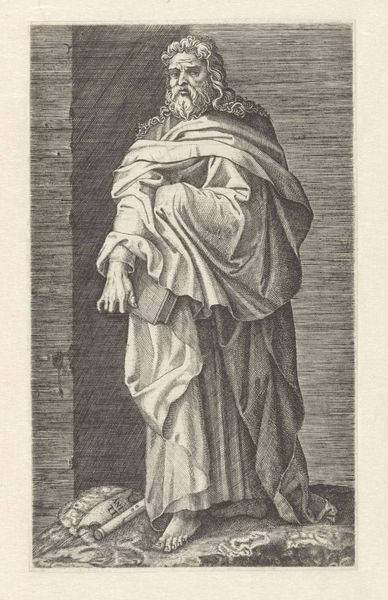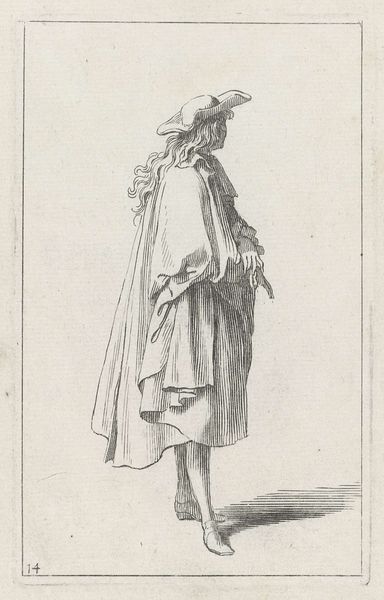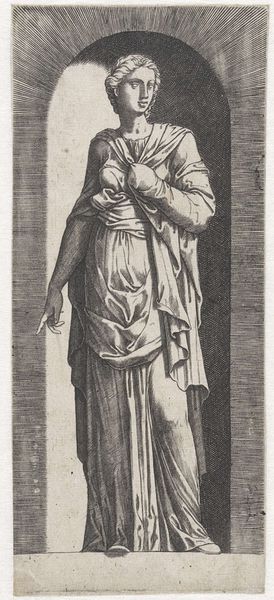
drawing, ink, sculpture
#
drawing
#
statue
#
figuration
#
ink
#
sculpture
#
pen-ink sketch
#
line
#
sketchbook drawing
#
academic-art
Dimensions: height 115 mm, width 67 mm
Copyright: Rijks Museum: Open Domain
Editor: We’re looking at "Statue of a Headless Figure," made between 1836 and 1912 by Isaac Weissenbruch. It’s a drawing, ink on paper, and… it’s just that: a statue, or a drawing of a statue missing its head. What do you see in this work? Curator: I’m drawn to the materiality of this piece. It's a drawing depicting sculpture; the intersection of media is critical here. We have ink and paper attempting to capture the mass and texture of stone. Consider, too, the production: ink sketches would be readily reproduced and circulated compared to marble. Is this then about access? About the democratization of art in the age of reproduction? Editor: That's interesting! It feels very…academic in style. The lines are so precise, yet the subject itself, this headless figure, feels incomplete. Curator: Precisely. That 'academic' precision points us towards specific training and artistic labor. The artist's hand is evident in the linework, and it’s that manual labor, the skill involved in representing texture and form, that interests me. This suggests both a reverence for the original sculpted form and a reinterpretation through the medium of ink, which becomes a more accessible object through reproduction. Are we seeing Weissenbruch negotiate the status of art object via its method of production and its reproducibility? Editor: So it’s about thinking beyond just what the statue *is*, and considering *how* it’s represented? Curator: Exactly. We see the artist choosing ink – a replicable, accessible material – to represent something monumental and unique, questioning those established artistic hierarchies. What implications are drawn out through its production? And how does the loss of a head reflect the fracturing nature of art and its means of reproduction in modernity? Editor: I never thought about a drawing of a statue this way. Seeing it in terms of materials and access makes it much more engaging! Curator: Indeed, shifting the focus to the material conditions can illuminate the socio-political aspects within the work, it allows a broader conversation that examines its artistic lineage, production and consumption.
Comments
No comments
Be the first to comment and join the conversation on the ultimate creative platform.

